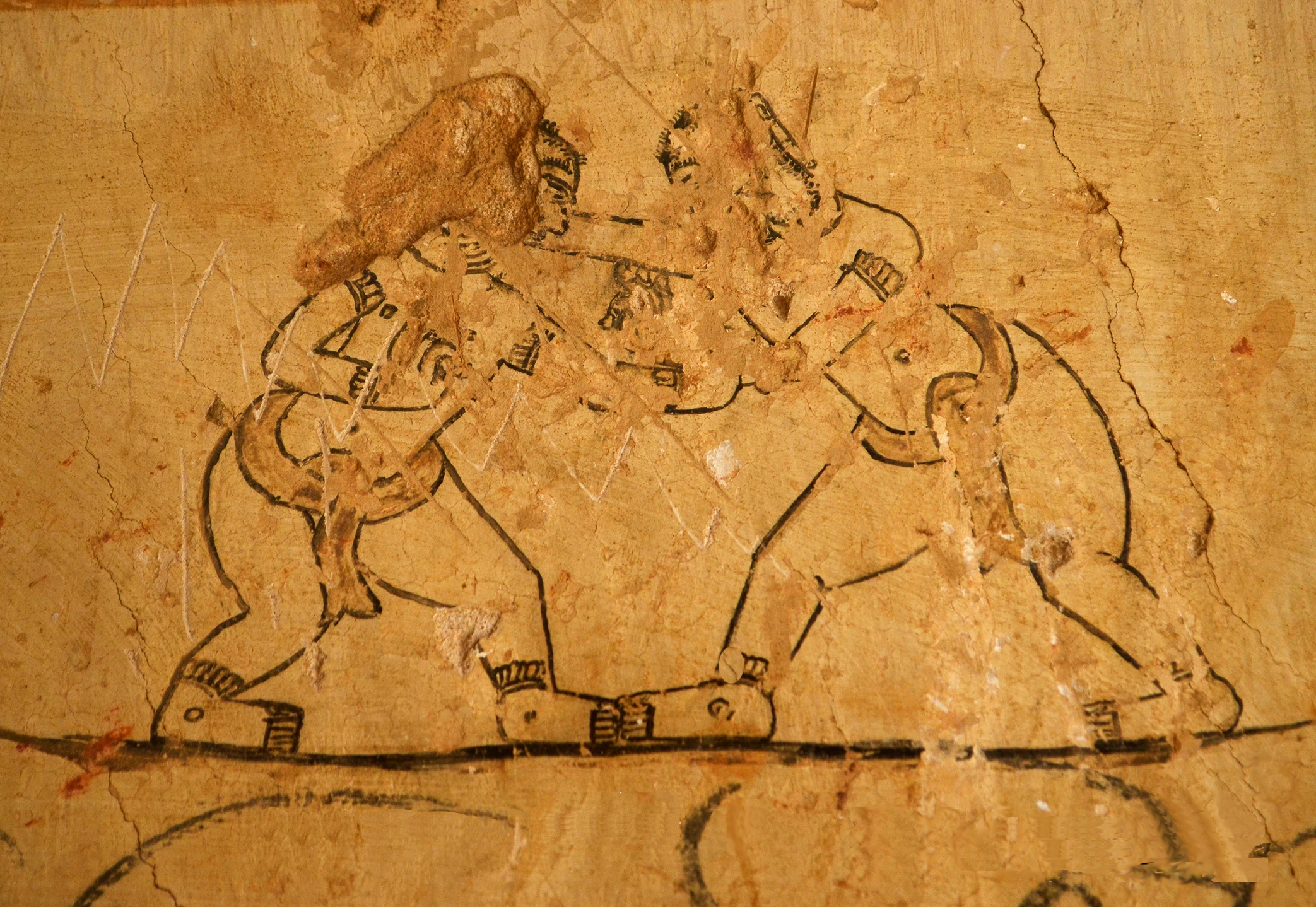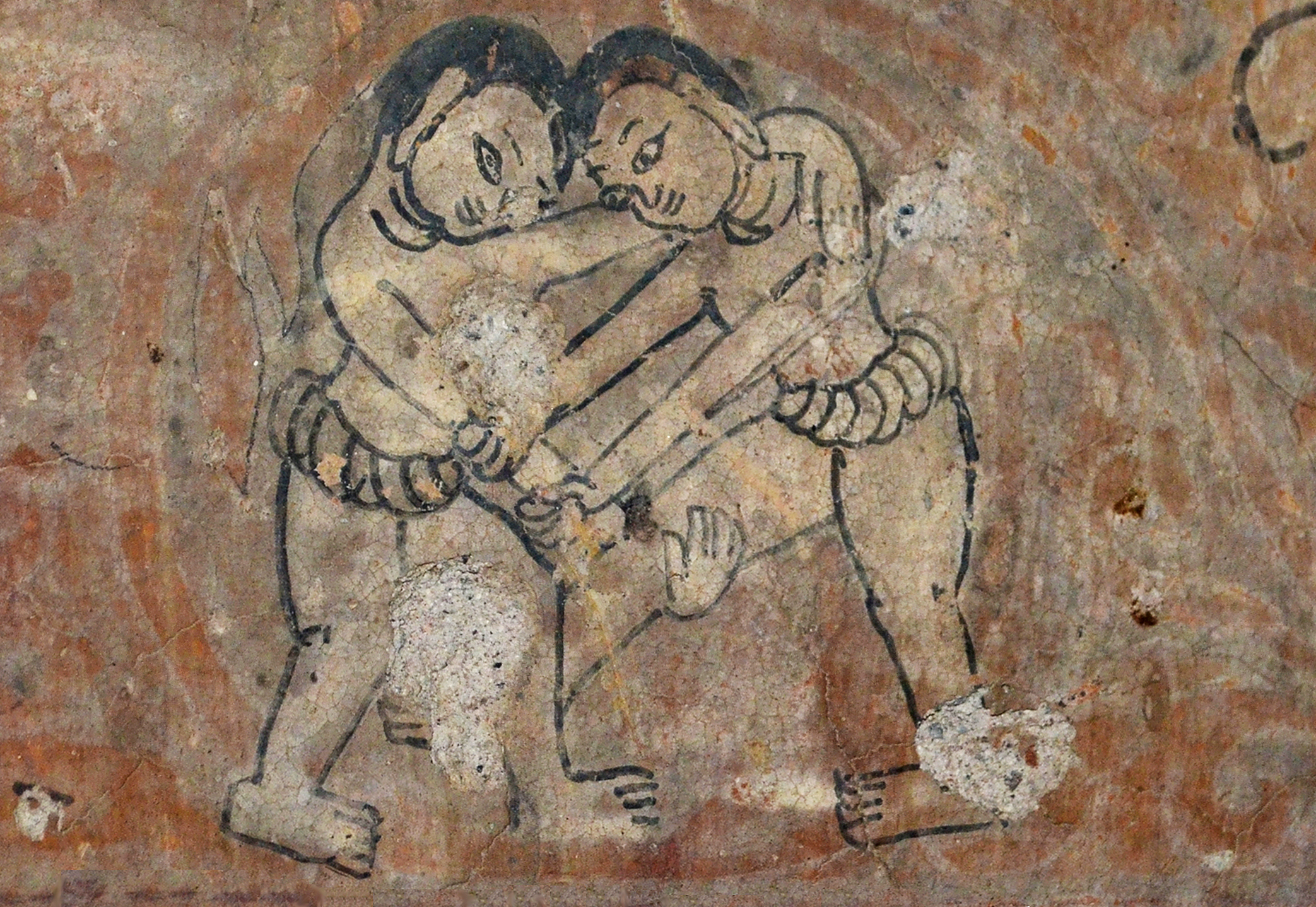LETHWEI AMERICA

Early Lethwei History
Many distinctive southeast Asian social institutions have been influenced by the cultures of India, China, and surrounding Asian civilizations. Similarly, Myanmar’s rich cultural and historical background has been shaped by the intermingling of such diverse peoples and backgrounds. This diversity has resulted in a broad tradition of combat disciplines among the Myanmar people that include Lethwei (combat sport), Bando (empty-hand fighting methods), Banshay (weapon-based fighting methods), and Naban (grappling methods). Ancient Myanmar armies successfully used Lethwei, as well as Bando, Banshay, and Naban in numerous wars and conflicts with neighboring countries.1,2,3,4
Among the Myanmar people, it is a widely accepted belief that Burmese monks developed Lethwei around the 3rd century for discipline and self-defense. Inscriptions on temple walls in the ancient city of Bagan provides archaeological and historical evidence that establishes Lethwei around 800 A.D.. Ancient royal chronicles and other written records show the sport of Lethwei became increasingly popular during the 10th century A.D. when the warrior King, Anawratha, defeated the neighboring Thais, Shans, and Mons and founded the first Burmese Empire.4,5,6,7

During the reigns of the Nyaungyan dynasty (16th century) and King Alaungpaya (18th century) Lethwei spread to Myanmar’s neighboring countries through the conquests of the neighboring kingdoms of Siam and Lao. It was during this period that Lethwei became the national sport of the empire. From the smallest town to the largest city, men and boys were trained in Lethwei along with other indigenous martial arts. Tournaments were held during every festival. Boxers were handsomely rewarded for their style and skill. From 1044 to 1885, highly skilled boxers were designated “Royal Boxers,” and their names were recorded on the royal treasury roles.4,5,6,7
For centuries, hundreds of Lethwei matches have been held between various tribes and ethnic groups within the Burmese empire. Fights were held in a large dirt circle, surrounded by supporters and spectators. There was no round system, time limits, or weight classes. Kicks, punches, elbows, knees, headbutts, holds, and throws were permitted.6

In 1885 the British invaded Myanmar (Burma) and Colonial period of rule began. During this time period Lethwei saw a decline as a result of British oppression and degradation. Lethwei was looked down upon and used primarily as entertainment for British officials and rich merchants. The British perceived Lethwei and other Myanmar fighting arts as posing potential threats to their occupation. As a result practitioners of Lethwei were severely punished by the British. Articles 109 and 110 of the British penal code even classified Burmese boxers and other Thaing practitioners (Bando, Banshay) as criminals. Lethwei was banned by the British from 1886 until 1948. In spite of this, Lethwei and the other traditional Myanmar fighting arts did not disappear among the Myanmar people. Rather, Lethwei and other Myanmar fighting arts were maintained by concealing them as dances or cultural traditions during festivals, especially in the Shan and Karen States. Lethwei also remained an active sport in the rural villages where it was quietly propagated and kept alive. This was in spite of the British suppression that saw Burmese Boxers classified as vagrants and habitual criminal offenders who were subject to arrest.4,6,7,8
References
1 Green, T. A., ed. (2001). Martial Arts of the World: An Encyclopedia. ABC-CLIO: Santa Barbara.
2 Rebac, Z. (2003). Traditional Burmese Boxing: Ancient and Modern Methods from Burma’s Training Camp. Paladin Press.
3 Simandan, V. M. (2015). Burmese Lethwei: An Ancient Tradition Lives On. http://www.simandan.com/burmese-lethwei-ancient-tradition-lives-on/
4 Mallon, S. (2005). Leth Wei & Khun Khmer Boran: Fighting Arts Of Burma And Cambodia. Journal of Asian Martial Arts, Vol. 14, No. 2i
5 Lethwei-Martial Arts Database (2012). Available: http://www.mardb.com/lethwei
6 Gyi, M. (2000). Bando: Philosophy, Principles, and Practice. Private Publication.
7 Courderette, M. (2017). Lethwei: Myanmar Traditional Boxing. Ginger Editions Publisher
8 Giordano, V. (2012). Burmese Lethwei: The Ancient Art of Bare-Knuckle Fighting. Muay Thaimes. Vol. 6; No. 1.